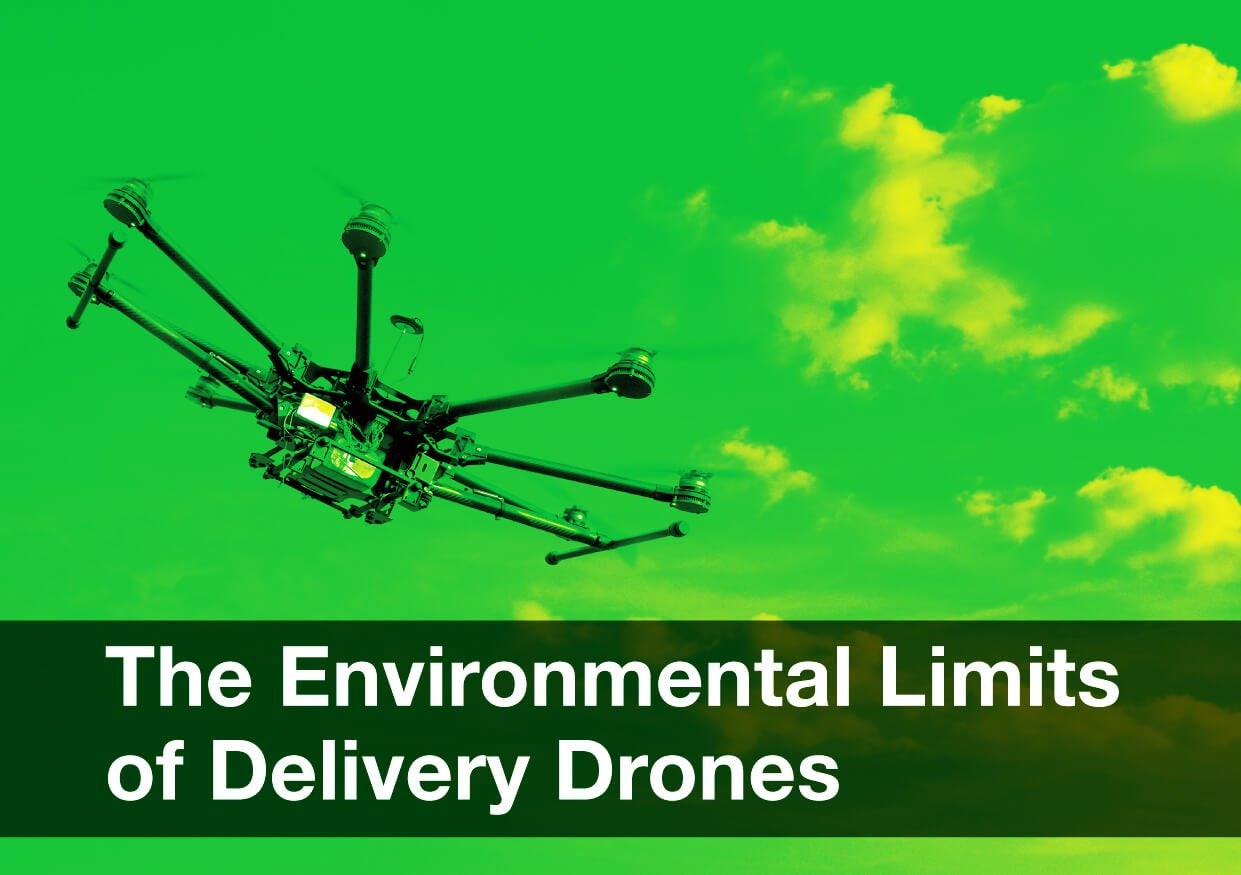The Environmental Limits of Delivery Drones
Over the last decade of development, unmanned aerial vehicles (UAVs), or simply, drones, have been rapidly established as one of the most versatile and defining technologies of today.
From warfare to amateur photography, the drone platform seemingly carries endless applications, across a vast range of industries.
In conjunction, the Retail and Distribution industry has been one of the largest benefactors from industrial automation technology. Developments in robotics, software, and IoT, have resulted in some supply chains operating almost entirely without human interaction. However, while various tracking technologies and intelligent route planners have come a long way, the fundamental delivery process remains largely unchanged. It is therefore unsurprising that one of the earlier and most widely discussed considerations for modern “quadcopter” technology was its potential for transporting goods, as an environmentally friendly, non-congesting, and cost-effective alternative to the traditional delivery truck.
A recent study conducted by the University of Washington on the viability of delivery drones, however, has drawn some surprising conclusions about the potential environmental benefits of drone delivery methods.
The team started by creating a model for drone emissions calculated from their energy usage, and then compared it to existing models from trucks, which currently remain the most popular means of parcel delivery. Upon comparison, the results demonstrated that while drones could, in some scenarios, reduce emissions, this only occurred when the shipment was very light in weight, such as a small medicine bottle, and only travelled a short distance. The delivery distance and cargo weight threshold in which drones proved to be a greener alternative to trucks, was found to be surprisingly narrow.
A handful of factors proved to play heavily in favour of the delivery truck; primarily, the demanding energy requirements that even small packages placed on the drone, as well as the limited number of packages they are able to carry in a single journey.
Lead author of the research paper, Anne Goodchild, summarised this result: “Given what we found, probably the most realistic scenario is for drones doing the last leg of the delivery. You’re probably not going to see these in downtown Seattle anytime soon. But maybe in a rural community with roads that are slow and hard for trucks to navigate and no air space or noise concerns.”
Fortunately, the results do indicate that a carefully managed balance of the two methods would yield optimal results. And while today the threshold for energy efficient drone delivery methods might be a narrow one, current rates of development in electric vehicles, drone capabilities, and broader energy production methods, suggest any “efficiency threshold” will be a temporary one.
While technological progress is a subject the whole team at Dashboard is passionate about, we firmly believe offsetting environmental impact must remain an ever-present component of what we would consider industrial efficiency. Studies such as this must continue to guide and inform policy, the public, and businesses, striving to better understand the environmental implications of modern alternatives to traditional methods.
